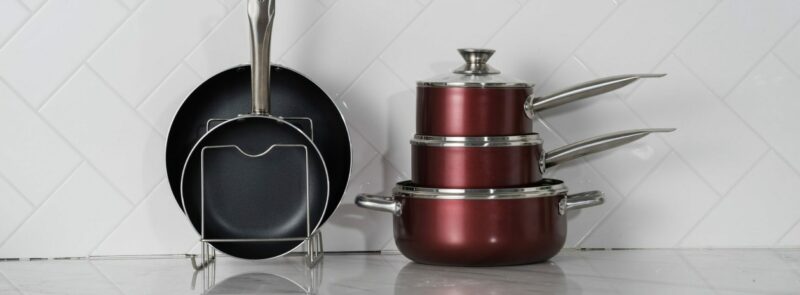Kitchen Packing 101
In the process of how to pack pots and pans there are a few easy steps to make it a fairly smooth project.
Materials & Prep
To start out we’ll need to make sure we have all the right materials ready. If you need more info on purchasing moving boxes, check out the supplies we offer.
Moving materials Needed:
- Medium 3.0 cube boxes or dish pack boxes
- Packing tape
- Packing paper
- Marker
When combining Pots & Pans they go well with:
- Small durable appliances
- Tupperware and other plastic kitchen items
- Dry goods
Start off by putting your box together. You may want to double tape the bottom of the box as it will be heavier than your average box after loading it with pots and pans.
Step
1
Wrapping
Your pots, pans, and other heavy metal cooking gadgets should be wrapped in paper and loaded at the bottom of any box. As we discussed in our article on how to pack a kitchen, wrapping these heavy items will decrease the risk of damage to other items within the same box.Step
2
Packing the box
Once you have a layer of stuff in the box, put some paper on top before you start packing other items. Sufficient padding is crucial to the safety of your kitchen-ware! It's useful to nest the pots and pans together to save space. The lids can be wrapped together but be careful if you have glass lids to protect them properly. Be sure to be aware of the boxes' weight as your packing the box. You should aim for a box weight of around 34 lbs - 45 lbs max. You can pack other lighter items into the box to fill space without adding too much weight. If you want to make a very heavy box it will be important to use a dish pack box instead of a medium box to add structural integrity.Step
3
Seal & Label
Once your box is finished you should label it with the room, contents and any special notes. It's most useful to label the box on the top and at least one side so that you can see the label when it's stacked. If the box is heavier than ~35lbs you may want to label it heavy to prevent any injury during the moving process.
